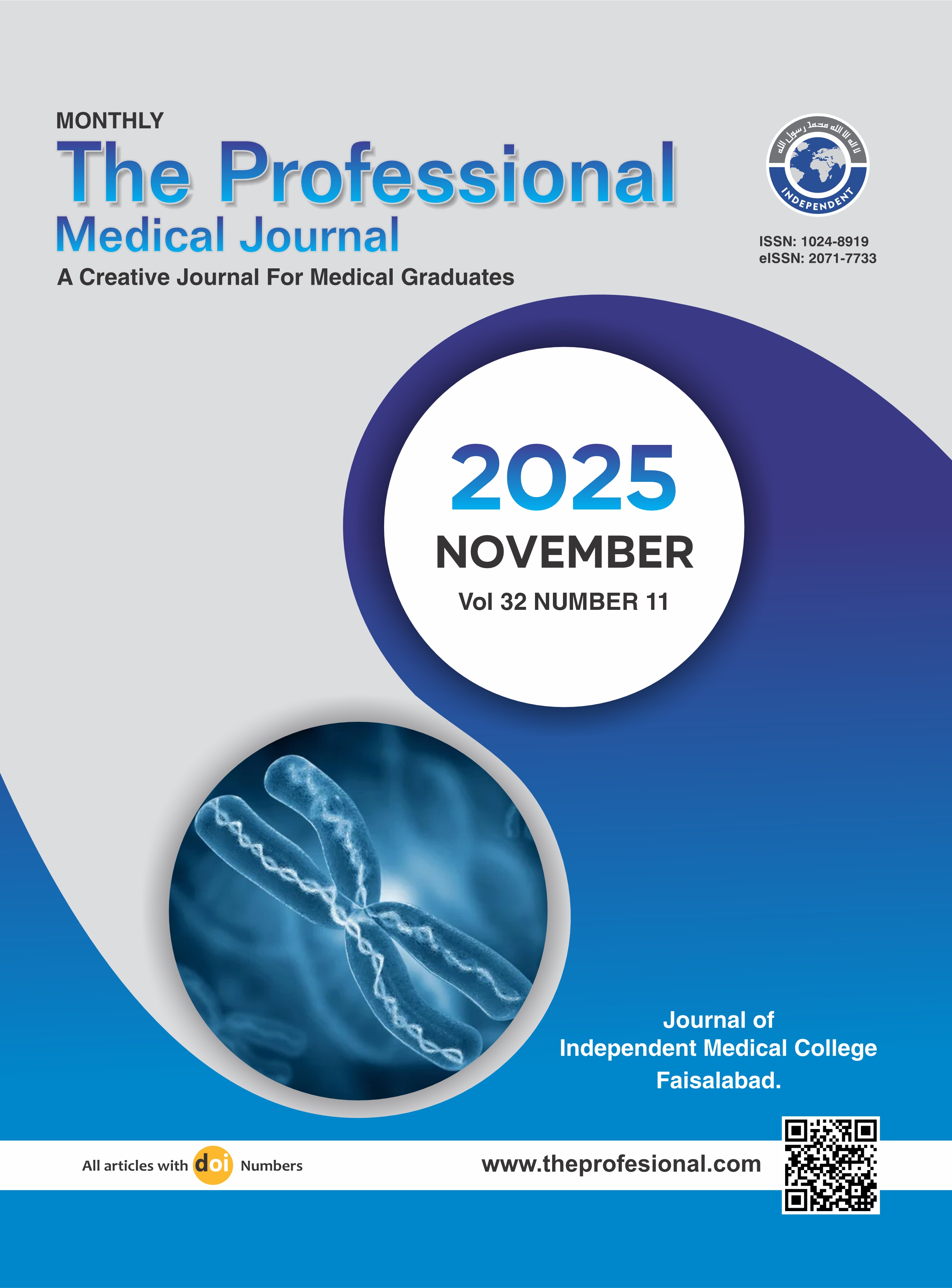Frequency of Malaria in neonatal sepsis.
DOI:
https://doi.org/10.29309/TPMJ/2025.32.11.9889Keywords:
Hepatoseplenomegaly, Jaundice, Malaria, Neonate, SepsisAbstract
Objective: To determine the frequency of malaria in neonatal sepsis. Study Design: Cross-sectional study. Setting: Department of Neonatology, RTEH Hospital, Muzaffargarh, Pakistan. Period: July 2024 to December 2024. Methods: A total of 218 neonates presenting with suspected sepsis were analyzed. Demographical and clinical information was noted. Blood samples were collected and sent to laboratory for relevant investigations. Malaria parasite assessment was done using Acu-check Malaria P.f. / Pan Ag Rapid Test Device. Thin smear evaluation was be performed to identify the malarial parasite species. Results: In a total of 218 neonates, 112 (51.4%) were males. The mean age was 13.8±9.0 days. Hepatosplenomegaly, pallor, and jaundice were noted in 90 (41.3%), 107 (49.1%), and 53 (24.3%) neonates, respectively. Late-onset sepsis was the commonest type, found in 138 (63.3%) neonates. Malaria was present in 9 (4.1%) neonates, while P. falciparum, and P. vivax were identified in 4 (1.8%), and 5 (2.3%) neonates. Malaria in neonates with sepsis was found to have significant association with hepatosplenomegaly (100% vs. 38.8%, p<0.001), jaundice (77.8% vs. 22.2%, p<0.001), and higher temperature (38.9±0.3 vs. 37.4±1.3 0C, p<0.001), lower hemoglobin level (8.6±0.5 vs. 12.5±1.4 g/dl, p<0.001), and lower platelet levels (89.8±29.5 vs. 276.8±100.2 (109/L, p<0.001). Conclusion: Malaris should be considered in those neonates presenting with sepsis-like symptoms in endemic regions. The low prevalence (4.1%) observed reflects ongoing efforts to control malaria because of this life-threatening disease.
Downloads
Published
Issue
Section
License
Copyright (c) 2025 The Professional Medical Journal

This work is licensed under a Creative Commons Attribution-NonCommercial 4.0 International License.


